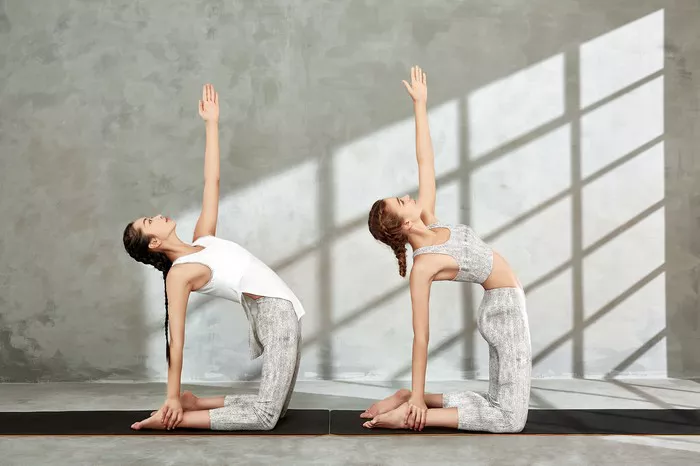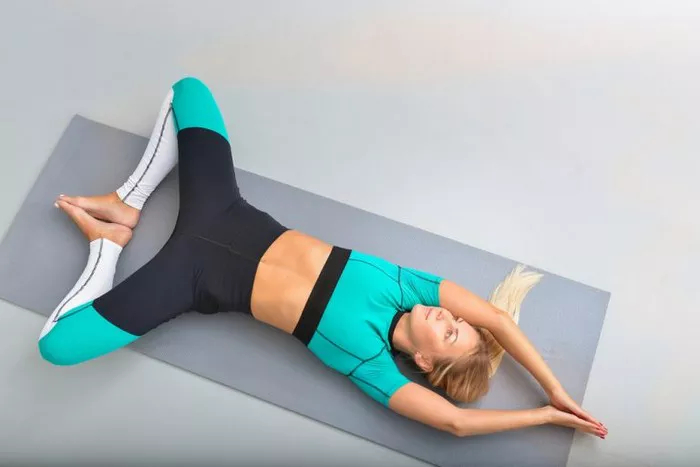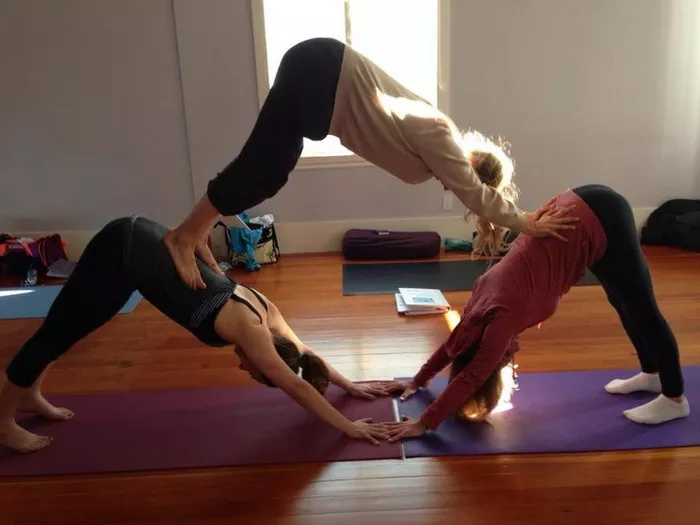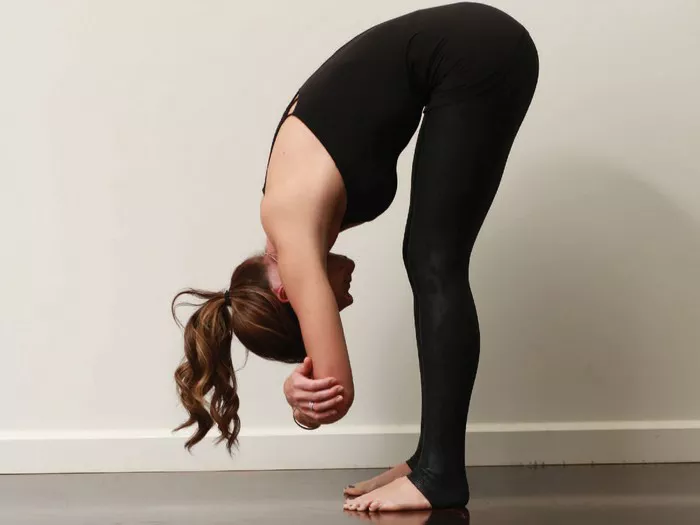Yoga is often perceived as a solitary practice, but its benefits can be amplified when shared with a partner. Partner yoga, also known as AcroYoga or couples yoga, offers a unique opportunity for individuals to deepen their connections, both physically and emotionally. By synchronizing breath and movement, partners can enhance their trust, communication, and physical strength together.
In this article, we’ll explore 10 easy yoga poses for two people that are suitable for practitioners of all levels. These poses not only foster a sense of unity but also provide a fun and engaging way to explore yoga with a partner.
1. Partner Seated Forward Fold (Paschimottanasana)
Description: Sit facing each other with your legs extended. Hold hands or wrists and gently lean forward, keeping your backs straight. Focus on lengthening the spine and reaching towards your feet.
Benefits: This pose stretches the hamstrings, spine, and shoulders while promoting relaxation and openness in the hips. It also encourages communication and trust between partners.
2. Double Downward Dog (Adho Mukha Svanasana)
Description: Start in a traditional downward dog position. Partner A assumes the downward dog pose while Partner B stands behind Partner A, placing their hands on Partner A’s hips. Partner B then presses gently downward, providing a deeper stretch for Partner A.
Benefits: Double Downward Dog strengthens the arms, shoulders, and core muscles while providing a deep stretch for the hamstrings and calves. It also fosters trust and communication between partners.
3. Partner Tree Pose (Vrksasana)
Description: Stand side by side, facing the same direction, and place the inside foot against the opposite thigh or calf. Join hands with your partner for balance and stability, maintaining a steady gaze on a focal point.
Benefits: Partner Tree Pose improves balance, focus, and concentration while strengthening the legs, ankles, and core muscles. It also requires coordination and teamwork between partners.
4. Partner Boat Pose (Navasana)
Description: Sit facing each other with your knees bent and feet flat on the floor. Hold hands and lean back slightly, lifting your feet off the ground. Straighten your legs as much as possible while maintaining balance.
Benefits: Partner Boat Pose strengthens the core muscles, hip flexors, and lower back while improving balance and coordination. It also encourages communication and mutual support between partners.
5. Double Child’s Pose (Balasana)
Description: Sit back on your heels and extend your arms forward, bringing your forehead to the mat. Partner A assumes the child’s pose while Partner B sits behind Partner A, placing their hands on Partner A’s lower back for support.
Benefits: Double Child’s Pose gently stretches the hips, thighs, and lower back while promoting relaxation and stress relief. It also fosters a sense of security and comfort between partners.
6. Partner Supported Warrior II (Virabhadrasana II)
Description: Stand facing each other, about arm’s distance apart. Partner A steps back into a traditional Warrior II pose, while Partner B stands in front, facing Partner A, and supports Partner A’s arms from below.
Benefits: Partner Supported Warrior II strengthens the legs, arms, and shoulders while improving balance and stability. It also enhances trust and connection between partners through mutual support.
7. Partner Seated Twist (Ardha Matsyendrasana)
Description: Sit facing each other with your legs extended. Partner A bends their right knee and places the foot on the outside of Partner B’s left thigh. Partner A then twists to the left, while Partner B mirrors the twist in the opposite direction.
Benefits: Partner Seated Twist improves spinal mobility and flexibility while stretching the back, shoulders, and hips. It also encourages communication and synchronization between partners.
8. Partner Backbend (Urdhva Dhanurasana)
Description: Partner A lies on their back with their knees bent and feet flat on the floor. Partner B stands behind Partner A, facing away, and holds Partner A’s hands. Partner A presses into their feet and lifts their hips into a backbend while Partner B provides support and stability.
Benefits: Partner Backbend opens the chest, shoulders, and hip flexors while strengthening the arms, legs, and core muscles. It also fosters trust and communication between partners through shared support.
9. Double Plank Pose (Phalakasana)
Description: Start in a traditional plank position facing each other, with your hands directly under your shoulders. Hold hands with your partner or place your palms flat on the ground. Engage your core muscles and maintain a straight line from head to heels.
Benefits: Double Plank Pose strengthens the core, arms, shoulders, and chest while improving overall stability and balance. It also encourages teamwork and mutual encouragement between partners.
10. Partner Relaxation Pose (Savasana)
Description: Lie on your backs with your legs extended and arms relaxed by your sides. Partner A assumes the savasana pose while Partner B sits beside Partner A and gently massages their temples, shoulders, or feet.
Benefits: Partner Relaxation Pose promotes deep relaxation, stress relief, and mental clarity while fostering a sense of connection and intimacy between partners. It also allows for mutual care and support within the partnership.
Conclusion
Practicing yoga with a partner offers a myriad of benefits for both individuals involved. Whether you’re looking to strengthen your bond, improve communication, or simply have fun together, these 10 easy yoga poses provide a perfect starting point. Remember to approach each pose with patience, openness, and a spirit of collaboration, and enjoy the journey of shared practice with your partner.























